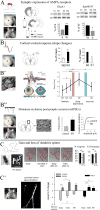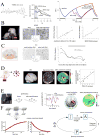Sleep and the price of plasticity: from synaptic and cellular homeostasis to memory consolidation and integration
- PMID: 24411729
- PMCID: PMC3921176
- DOI: 10.1016/j.neuron.2013.12.025
Sleep and the price of plasticity: from synaptic and cellular homeostasis to memory consolidation and integration
Abstract
Sleep is universal, tightly regulated, and its loss impairs cognition. But why does the brain need to disconnect from the environment for hours every day? The synaptic homeostasis hypothesis (SHY) proposes that sleep is the price the brain pays for plasticity. During a waking episode, learning statistical regularities about the current environment requires strengthening connections throughout the brain. This increases cellular needs for energy and supplies, decreases signal-to-noise ratios, and saturates learning. During sleep, spontaneous activity renormalizes net synaptic strength and restores cellular homeostasis. Activity-dependent down-selection of synapses can also explain the benefits of sleep on memory acquisition, consolidation, and integration. This happens through the offline, comprehensive sampling of statistical regularities incorporated in neuronal circuits over a lifetime. This Perspective considers the rationale and evidence for SHY and points to open issues related to sleep and plasticity.
Copyright © 2014 Elsevier Inc. All rights reserved.
Figures




References
-
- Abraham WC, Robins A. Memory retention--the synaptic stability versus plasticity dilemma. Trends Neurosci. 2005;28:73–78. - PubMed
-
- Alger SE, Lau H, Fishbein W. Slow wave sleep during a daytime nap is necessary for protection from subsequent interference and long-term retention. Neurobiol Learn Mem. 2012;98:188–196. - PubMed
-
- Antonenko D, Diekelmann S, Olsen C, Born J, Molle M. Napping to renew learning capacity: enhanced encoding after stimulation of sleep slow oscillations. Eur J Neurosci. 2013;37:1142–1151. - PubMed
Publication types
MeSH terms
Grants and funding
LinkOut - more resources
Full Text Sources
Other Literature Sources
Medical

